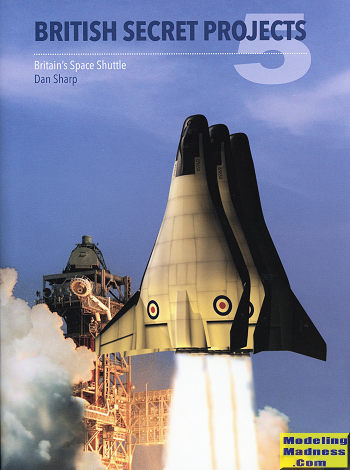 Many
of us often forget, or probably never knew, that the British were heavily
involved in developing what later became to be known as the Space Shuttle. In
particular, English Electric invested quite a considerable amount of time and
talent into designing various vehicles to allow the UK to be a major player in
the efforts to provide a reusable space craft.
Many
of us often forget, or probably never knew, that the British were heavily
involved in developing what later became to be known as the Space Shuttle. In
particular, English Electric invested quite a considerable amount of time and
talent into designing various vehicles to allow the UK to be a major player in
the efforts to provide a reusable space craft.
One has to realize that these efforts were not done in a
vacuum, as any design requires a myriad of other components, particularly
engines. The number of possible methods of propulsion included things like
nuclear engines, ramjets, turboramjets, turborockets, and 'flashjets' which used
a hydrogen based fuel. In addition, early designs envisioned a number of
basically horizontal take off options that had the final spaceship carried under
or atop a hypersonic carrier aircraft. It was this vehicle which would use these
exotic engines, with some sort of rocket required to get the carried craft into
space.
Needless to say, the designs, while quite feasible in
terms of the metallurgy of the day, never came to fruition as the engines were
never developed past the initial design stage. To my knowledge, none of these
were ever prototyped. It was eventually realized that horizontal deployment
would not be a realistic method of launch so the basic focus switched to the
now-standard vertical launch.
An issue regarding anything launched from Europe is that
one has to be very careful of where to put the launch site. With standard rocket
boosters, there is always a possibility of the spent boosters falling on
civilians. This is the reason the French launch from Guiana. One way to overcome
this would be to develop reusable boosters. In this case, it meant ones that
were manned and able to return to the launch site under human guidance once they
reached a release altitude of about 200,000 feet. Keep in mind that this was all
in the 1963-66 time frame and there were no GPS satellites or methods of
remotely operating the returning boosters as we see today with Space-X.
To keeps costs in line, the boosters were basically the
same airframe as the spacecraft itself. These could then be stacked as shown on
the cover art, or arranged in triple or quadruple lower sections with the
spacecraft on the top. So why don't we see an all British space shuttle or even
one from an all European space agency? The real answer is funding.
Without giving away too much more, I can tell you that
the author did an incredible job researching this book. The depth of the
information provided and the insights into the program make for a superb read. I
had no trouble understanding what was going on and was able to follow the
progression from the start to its conclusion. I learned a lot, which is, I
suppose, what everyone wants from a book of this type. I was also impressed by
the sheer number of designs that were put forward for this and related projects.
In all, it makes for a book that those interested in the subject will want to
have on their shelves.
February 2017
Copyright ModelingMadness.com.
Review book courtesy of
Specialty Press ,
where you can order your copy of this and many other superb aviation and
modeling books. Visit their website at the link above,
use this direct link, or call them at
1-800-895-4585
,
where you can order your copy of this and many other superb aviation and
modeling books. Visit their website at the link above,
use this direct link, or call them at
1-800-895-4585
If you would like your product reviewed fairly and quickly, please
contact
me or see other details in the
Note to
Contributors.
 Many
of us often forget, or probably never knew, that the British were heavily
involved in developing what later became to be known as the Space Shuttle. In
particular, English Electric invested quite a considerable amount of time and
talent into designing various vehicles to allow the UK to be a major player in
the efforts to provide a reusable space craft.
Many
of us often forget, or probably never knew, that the British were heavily
involved in developing what later became to be known as the Space Shuttle. In
particular, English Electric invested quite a considerable amount of time and
talent into designing various vehicles to allow the UK to be a major player in
the efforts to provide a reusable space craft.